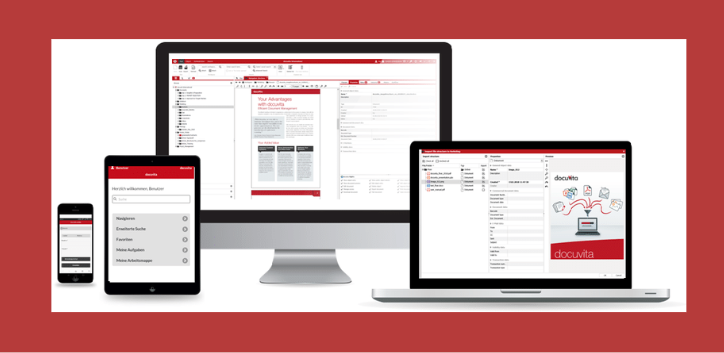
by Maria Argyti
As more cases of the coronavirus are found across the European Continent, business executives are facing the very real challenge of achieving business continuity in the lockdown era. The questions every business owner or CEO is asking are: “How well will my business cope without physical presence? How can I support the personnel to work remotely? Can the staff be productive when they are self-isolated?”
See COVID-19 as the opportunity to create the “anytime”, “anywhere” company
The coronavirus forces companies to transform and go digital to remain “open”, run business-critical tasks and serve their customers. Most companies are trying to figure out how to conduct business as usual when most governments enforced lockdown and home working. Today we may see this policy as a threat to our business survival. But you agree that crisis means opportunities! Grab the opportunity to implement digital transformation plans. Invest the funds you receive from your governments to mobilize your company. Create the “anytime, anywhere” company. So where should organizations start?
Start with building a comprehensive remote work strategy and Online Sales & Supports. Work towards these three pillars:
1. REMOTE WORK STRATEGY
Remote Work Strategy is important to understand terms that surround the idea of working away from the office. CEOs and business owners may feel they cannot control the performance of their employees when working out of the office and lack of face-to-face supervision. But this is only true when employees feel:

Remote Work Tools: Ensure all employees could access the tools they need to work remotely. I refer to enterprise systems like HR, payroll, ERP and CRM, telephone and collaboration tools as well as email and file stores.
If your company doesn’t have technology tools already in place, there are inexpensive ways to obtain Cloud CRM, Cloud ERP and Collaboration tools for your teams. Remote work becomes more efficient and satisfying when managers set business workflows which work as task-based daily schedule. Meaning, you should be able to use a workflow automation solution that interacts with Cloud CRM or Cloud ERP. Prefer business applications like docuvita document management systems (DMS) that would help you set-up rule-based access, share business information and also automate business processes which can be monitored. At the same time, you will maximize the collaboration among teams and employees by exchanging comments and notes. This affordable system is pre-integrated with all known ERPs and CRMs used in the Enterprises. It doesn’t require any skill set to use and can be adapted to the specific needs of each individual company. docuvita DMS is available on the web and mobile devices and fully supports remote working.
This way your employees will stay engaged and productive, while managers could efficiently measure the employee performance in more tangible ways rather than the physical presence at the office.
Communication: One of the most essential steps a manager, CEO or business owner can take is to establish daily communications with their employees. Email is not enough. You should schedule a daily one-to-one call or team calls. Make sure that calls are regular and predictable, and open enough to encourage employees to consult with you, share their concerns and make them feel that their questions will be answered. There are several conference tools that support instant chat, audio and video conferencing. This makes communication personal and more satisfying for both employees and managers. There are many collaboration tools, offered free and payable versions like Skype, Viber, Messenger, Slack, Zoom, Google Hangouts and Microsoft Teams. All tools can be used from both personal computers and mobile devices. It can be used for both formal and informal communications.
Offer Self-Service HR: With employees working from home, they typically interact much less with the HR. They are no longer able to walk to the HR department and ask a quick question. In large, companies haven’t implemented Cloud Human Resource Management Systems. It is to deploy systems like Subscriptor HR and Exelsys Cloud HRMS Solutions to request time off and submit expenses, access their payroll and benefit information.
2. ONLINE-SALES & SUPPORT STRATEGY
It is true that in the coronavirus pandemic more emphasis has been given on supporting the employee remote working. But, what do we do about remote selling? That is, selling to remote buyers and customers, particularly if your business model relies on in-person sales. Business Owners and Executives also deal with the challenge of buying and selling exclusively remotely due to the enforcement of lockdown measures. Customers stay inside their homes and they buy online or their mobile devices.
The companies that have evolved their sales model to be more omni-channel (online and in-store sales) will capitalize on current conditions and take share. For those who haven’t, now is the time to jumpstart that journey. So, what can you do to:

It is a huge transition for both customers and companies. There are relatively quick and inexpensive things that business owners and executives can do to smooth the transition. Actions that you can take today include:
Sell Online: Leverage phone orders, your e-shop and the online marketplaces to promote your products and services. Most probably your customers will not come to your store to buy your products. Using your online shop and/or marketplaces can help you make up for losses in physical sales. Remember you should showcase products via videos and photos to help your customers decide before they buy.
The systems you will need to sell online or via phone are: e-commerce platforms, ERP and CRM systems to record and coordinate sales processes. If your company doesn’t have technology tools already in place, there are inexpensive ways to obtain e-commerce platforms, Cloud CRM, Cloud ERP. Digital sales become more efficient and satisfying to your customers when you offer contactless sales operations. Meaning, you should be able to issue e-invoices, e-delivery notes and e-signature.
If you wish to support contactless sales operations you should consider docuvita document management solution to add e-Invoice and e-Signature capabilities. Furthermore, you can add an approval process for orders, invoices and payments. docuvita document management system allows the sharing of Invoices automatically with internal and external users. All information and all documents can be accessed from one system while working remotely and regardless of the device you work. On top companies can monitor payment deadlines.
It is crucial for companies to control their inventory across all warehouses to avoid overselling. This is even more crucial, especially in times with disconnections in the supply chain. Ensure that your ERP system can automatically sync your available inventory to your sales channels.
Communication: Sales Account Manager and Sales are wondering how they will communicate with their customers when face-to-face meetings aren’t possible? Email communications should be short and express support. It’s also important to schedule video-conferences with your customers in an unprecedented time like now. Make sure that customers are receptive to video conference calls.
Alternatively, you may select instant chat, which allows you to exchange short and meaningful messages. This makes communication personal and less disruptive for both you and your customers. There are many conference call tools, offered free and payable versions like Skype, Viber, Messenger, Slack, Zoom, Google Hangouts and Microsoft Teams. All tools can be used from both personal computers and mobile devices. It can be used for both formal and informal communications.
Events and Training: All in-person events and training are banned due to the coronavirus. How can you overcome this obstacle? You can still deliver events online. Plan a product launch or webinar online. It is a great alternative and you can still reach your customers. The webinar and online event platforms are offered free and in payable versions. You can select from a variety of platforms like Zoom, GoToMeeting, Google Hangouts, Zoho Meetings etc.
You will still need to plan the event internally in the company. So, platforms like docuvita DMS can help you collect the event material remotely, assign tasks and roles.
Customer Support: The pandemic is affecting all the departments of the enterprise. One of the most heavily affected departments is often customer service. The majority of the companies were unprepared to deal with the increased number of calls and customer anxiety. The customer support employees are working from home and in large they are called to take full responsibility to support the customer. It is difficult or not possible to connect with peers or managers to handle a call. Companies can use collaboration tools to help call center employees to connect with peers and managers to better support the customers. You can use instant chatting like Viber, Messenger or WhatsApp or Skype. The majority of the tools are offered for free and they are also known to all employees.
In parallel, you can create a FAQ with the most frequent customer requests and a knowledge base. You can use docuvita DMS to store the FAQ and the knowledge base material. This way, you render the information available to all employees anytime and anywhere.

3. SECURITY
COVID-19 has disrupted the operations of almost all companies. Even before the outbreak of the coronavirus, security was high up on the agenda of the companies. Now, with the employees working remotely companies were called to accommodate their IT infrastructure to support this shift. It is of utmost importance to protect businesses from security threats. What can you do?

IT departments face new challenges when it comes to managing fully remote working. The challenges evolve around ensuring accessible and reliable connections between corporate networks and employee devices, promoting collaboration and productivity between teams, networks and offices. Actions that you can take today include:
Network: Leverage Utilize VPN Connections. Using a VPN connection it will allow the employees working remotely to anonymously & securely access company data online.
Remote Access to Business Applications: One way to easily support remote workers is the use of cloud- based desktop-as-a-service (RDP or VDI) models. Employees can log into their virtual desktops from anywhere and from any device. With VDI you will no longer need to worry if the employees have corporate laptops, if you have enough licenses and if they can easily access the corporate applications remotely. There are many RDP or VDI solutions in the market like Citrix Desktops, VMware Horizon and Microsoft Remote Desktop Services.
Access Documents Securely: Possibly the biggest challenge for the companies is to access the business documents. As most companies haven’t migrated the physical file storage to a digital one, this creates a gap in the business continuity plan. docuvita DMS can act as a central documentary repository for business documents. You can start storing documents coming from emails, third party-systems i.e. ERPs or even the ones that employees have stored on their PCs.
Companies will also comply with regulations and security requirements. From e-Invoicing, ISO, Quality Management to GDPR, docuvita is a data-centric solution that stores and manages documents in a secure and legislative compliant way automatically. All documents stored in docuvita are encrypted.
The coronavirus pandemic has disrupted the operations of every business. Some CEOs may think only the survival of their company. Some others may think how to position themselves within the crisis. Others may think how to prepare for the next day of the pandemic. What you may not realize, living within the pandemic, is that this is your opportunity to re-imagine your company’s model. The adoption of technology is inevitable. In fact, technology proved to be the bullet-proof of companies showing resilience in the coronavirus pandemic.